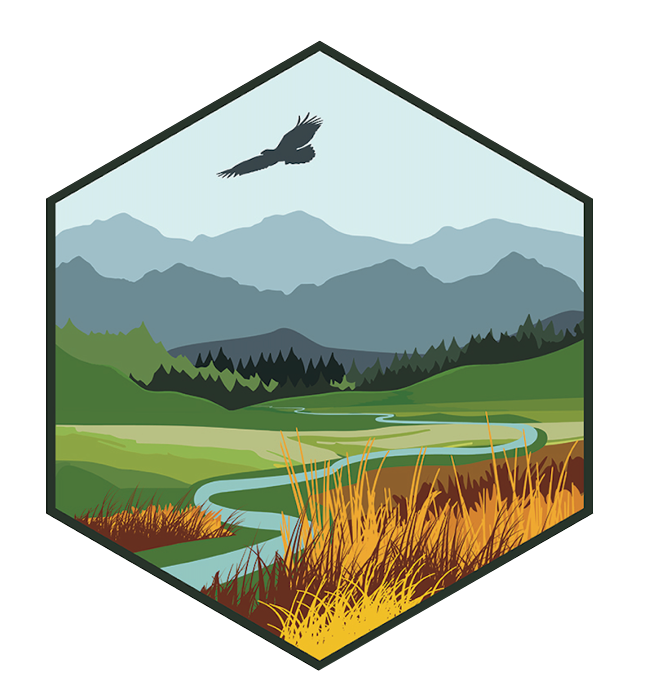Lakes, reservoirs, and ponds are central and integral features of the North Central U.S. These water bodies provide aesthetic, cultural, and ecosystem services to surrounding wildlife and human communities. External impacts – such as climate change – can have significant impacts to these important parts of the region’s landscape. Understanding the responses of lakes to these drivers is critical for species conservation and management decisions. Water temperature data are foundational to providing this understanding and are currently the most widely measured of all aquatic parameters with over 400 unique groups monitoring water temperature in U.S. lakes and rivers. However, lake temperature data are lacking at the relevant spatial and temporal scales needed for decision-making, and there has been a lack of national coordination and synthesis of these data collection efforts. Assembling and harmonizing this wealth of data would provide a valuable resource for modeling, analyzing, and predicting water temperature. This project will build upon previous work funded by the Northeast CASC that provided a foundation for modeling and predicting water temperature of approximately 11,000 lakes in Minnesota, Wisconsin, and Michigan. Project researchers are expanding those efforts by using the modeling techniques from the previous project, along with existing temperature data, to reconstruct a historical record of water temperatures from 1979 to 2018 and generate predictions for tens of thousands of lakes in the prairie pothole region of North and South Dakota. With this information, the team will also analyze the habitat suitability of these lakes to several fish species. Data from this project will help water and natural resource managers clarify and quantify risks to fish populations, for example by identifying where the preferred thermal habitat of a species is projected to disappear and put the fish at risk of local extirpation. Results will be directly relevant to understanding the health of water resources in the North Central U.S. and can inform specific conservation actions.
The Wind River Indian Reservation (WRIR) in west-central Wyoming is home to the Eastern Shoshone and Northern Arapaho tribes, who reside near and depend on water from the streams that feed into Wind River. In recent years, however, the region has experienced frequent severe droughts, which have affected tribal livelihoods and cultural activities. Scientists with the North Central Climate Adaptation Science Center (NCCASC) at Colorado State University, the National Drought Mitigation Center (NDMC) at the University of Nebraska-Lincoln, and several other university and agency partners in the region worked in close partnership with tribal water managers to assess how drought affects the reservation, which included the integration of social, ecological, and hydro-climatological sciences with local knowledge. The study revealed a long history with drought in the region, as well as issues that limit the tribe’s ability to manage their water resources. In addition, changing hydroclimate conditions were identified that can result in changing drought characteristics, which increases the need for adaptive management strategies. The findings are helping to inform the creation of a climate monitoring system and drought management plan, which have been supported with additional technical and financial support from the High Plains Regional Climate Center (HPRCC) and NOAA’s National Integrated Drought Information System (NIDIS). The drought plan will integrate climate science with hydrologic, social and ecological vulnerabilities and risks, and identify response capacities and strategies to support the Tribal Water Code and related resources management. Ultimately, the plan will help the tribes ensure that agricultural and other societal needs are met during times of drought. As part of the project, tribal water managers and the public were also engaged in educational activities related to water resources and drought preparedness through joint activities with Wyoming Experimental Program to Stimulate Competitive Research (EPSCoR) to build the tribe’s ability to response to future drought.
Changing climate conditions could have significant impacts on wildlife health. Shifts in temperature and precipitation may directly affect the occurrence of disease in fish and wildlife by altering their interactions with pathogens (such as the bacterium that causes Lyme disease), helping vectors like mosquitoes and ticks expand their range, or speeding up the time it takes for a parasite to develop from an egg to an adult. Climate change can also indirectly affect the health of fish and wildlife as their habitats change. For example, reduced food availability could lead to overcrowding and increased disease transmission, or warmer temperatures might increase stress levels, weakening immune systems and making animals more susceptible to disease. The goal of this project is to review and synthesize existing information on the impacts of climate change on fish and wildlife health across North America. Researchers will develop a searchable database containing this information, and will use that database to identify gaps in knowledge and unique areas of concern. Through a symposium with DOI scientists and stakeholders, including resource managers, state agencies, and tribes, researchers will define near-term science priorities for better understanding the impacts of climate change on wildlife health and will identify potential adaptation strategies.
This project supported the activities of the Climate Foundational Science Area (FSA) at the North Central Climate Science Adaptation Center (NC CASC). These activities included foundational research into drought processes relevant to the different climatic zones and ecosystems in the NC CASC region. We examined role of the atmospheric thirst for water from the land surface (aka, Evaporative Demand), how that may change during the 21st century and affect drought related risks in the future. We developed and did outreach with a drought index called the Evaporative Demand Drought Index (EDDI), that solely looks at the Evaporative Demand parameter, for its drought early warning potential, its ability to capture flash droughts and indicate persistence of severe drought conditions. Our research also examined how mountain snowpack is changing in the Intermountain West region of our domain, what processes are driving that change. For this, we focused on Wyoming’s Wind River Mountain Range because of its relevance to water resources for the Wind River Indian Reservation. Our findings show that as the region is experiencing warming, the snowline is shifting up and proportionally more rain is falling as precipitation than snow during the cold season leading to lower snowpack thickness and earlier melt. Climate FSA through this project was extensively involved in supported several NC CASC projects and stakeholders in providing assistance with climate science understanding, and use and provision of climate data. We have developed a strong stakeholder network in the region, and, in several cases, maintained a sustained engagement to promote literacy and integration of relevant climate science and data into understanding ecological impacts and develop strategies to foster resiliency in different social-ecological systems.
One of the biggest challenges facing resource managers today is not knowing exactly when, where, or how climate change effects will unfold. To help federal land managers address this need, the North Central CASC has been working with the National Park Service to pioneer an approach for incorporating climate science and scenario planning into NPS planning processes, in particular Resource Stewardship Strategies (RSS). These strategies serve as a long-range planning tool for a national park unit to achieve its desired natural and cultural resource conditions, and are used to guide a park’s full spectrum of resource-specific management plans and day-to-day management activities. To support adaptation planning within national parks, researchers with the North Central CASC designed an approach for integrating climate science and scenarios into the RSS process using Devils Tower National Monument in Wyoming as a test case. Building on these efforts, the goal of this project is to apply the lessons learned from the Devils Tower experience to a different NPS unit and context – Wind Cave National Park in South Dakota. This will enable researchers to test and refine guidance for incorporating climate science and scenario planning into the RSS process. This additional work is important to ensure that the guidance is relevant to multiple contexts, because RSS are a cornerstone of NPS planning and are being completed for all NPS units.
The purpose of this study was to understand how the U.S. Department of Interior’s federal land and resource managers and their stakeholders (i.e., NPS, BLM, FWS, BOR, BIA and tribes, among others) are experiencing and dealing with drought in their landscapes. The database is part of the Drought Risk and Adaptation in the Interior project. We conducted in-depth interviews (n=41) with DOI and tribal land managers in three case sites across the north central United States (northwest Colorado, southwest South Dakota, and Wind River Reservation), the goal of which was to develop a better understanding of drought vulnerabilities, risks, and responses in high-risk, multi-jurisdictional landscapes across the Missouri River Basin. DRAI posed the following research questions: 1. How do different resource managers from the Department of Interior (DOI), other federal agencies, and tribal communities perceive and characterize drought risk for the lands they manage? 2. How are their respective grassland/rangeland, fish and wildlife, and forest management decisions affected by those drought risk perceptions? 3. What indicators (e.g., climate science, local knowledge) are used to document and understand drought conditions and progression? 4. What are the impacts of drought to key management targets and livelihoods? 5. What are their differential capacities (and barriers) for responding to and preparing for drought risks? Data was analyzed using a grounded-theory approach, where risk perceptions, responses, and capacities to respond are derived from the stakeholders themselves. The database includes 41 in-depth interview transcripts with DOI (USFWS, BLM, NPS, BIA) land/resource managers, state and district water administrators, and tribal land and resource managers from 3 case sites. A range of expertise was represented in these interviews and included water resource managers/engineers, ecologists, wildlife biologists, fire coordinators, rangeland management specialists, among others. Each transcript has been coded, analyzed, and compared across cases and management situations in the context of the 5 overarching questions, as well as in the context of the inter-related climate drivers, ecological impacts, and adaptation/responses in the context of drought and climate change. The database includes 300+ social, climate, and ecological codes that describe the social-ecological context of drought and drought management in each respective case. See cross-listed publications and reports for major findings.
The combination of climate change and altered disturbance regimes is directly and indirectly affecting plant communities by mediating competitive interactions, resulting in shifts in species composition and abundance. Dryland plant communities, defined by low soil water availability and highly variable climatic regimes, are particularly vulnerable to climatic changes that exceed their historical range of variability. Individual‐based simulation models can be important tools to quantify the impacts of climate change, altered disturbance regimes, and their interaction on demographic and community‐level responses because they represent competitive interactions between individuals and individual responses to fluctuating environmental conditions. Here, we introduce STEPWAT2, an individual plant‐based simulation model for exploring the joint influence of climate change and disturbance regimes on dryland ecohydrology and plant community composition. STEPWAT2 utilizes a process‐based soil water model (SOILWAT2) to simulate available soil water in multiple soil layers, which plant individuals compete for based on the temporal matching of water and active root distributions with depth. This representation of resource utilization makes STEPWAT2 particularly useful for understanding how changes in soil moisture and altered disturbance regimes will concurrently impact demographic and community‐level responses in drylands. Our goals are threefold: (1) to describe the core modules and functions within STEPWAT2 (model description), (2) to validate STEPWAT2 model output using field data from big sagebrush plant communities (model validation), and (3) to highlight the usefulness of STEPWAT2 as a modeling framework for examining the impacts of climate change and disturbance regimes on dryland plant communities under future conditions (model application). To address goals 2 and 3, we focus on 15 sites that span the spatial extent of big sagebrush plant communities in the western United States. For goal 3, we quantify how climate change, fire, and grazing can interact to influence plant functional type biomass and composition. We use big sagebrush‐dominated plant communities to demonstrate the functionality of STEPWAT2, as these communities are among the most widespread dryland ecosystems in North America.

